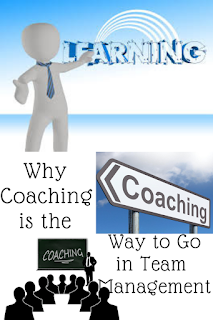Selling is challenging. It demands the utmost of your creativity and innovative thinking. The more success you want, and the more dedicated you are to achieving your goals, the more you'll sell. Hundreds of people the world over become millionaires each month through selling. Many of them were flat broke and unable to find a "regular" job when they began their selling careers. Yet they've done it, and you can do it too!
Remember, it's the surest way to all the wealth you could ever want. You get paid according to your own efforts, skill, and knowledge of people. If you're ready to become rich, then think seriously about selling a product or service (preferably something exclusively yours) - something that you "pull out of your brain"; something that you write, manufacture or produce for the benefit of other people. But failing this, the want ads are full of opportunities for ambitious sales people. You can start there, study, learn from experience, and watch for the chance that will allow you to move ahead by leaps and bounds.
Here are some guidelines that will definitely improve your gross sales, and quite naturally, your gross income. Here are the Strategic Salesmanship Commandments. Look them over; give some thought to each of them, and adapt those that you can to your own selling efforts.
1. If the product you're selling is something your prospect can hold in his hands, get it into his hands as quickly as possible. In other words, get the prospect "into the act". Let him feel it, weigh it, admire it.
2. Don't stand or sit alongside your prospect. Instead, face him while you're pointing out the important advantages of your product. This will enable you to watch his facial expressions and determine whether and when you should go for the close. In handling sales literature, hold it by the top of the page, at the proper angle, so that your prospect can read it as you're highlighting the important points.
Regarding your sales literature, don't release your hold on it, because you want to control the specific parts you want the prospect to read. In other words, you want the prospect to read or see only the parts of the sales material you're telling him about at a given time.
3. With prospects who won't talk with you: When you can get no feedback to your sales presentation, you must dramatize your presentation to get him involved. Stop and ask questions such as, "Now, don't you agree that this product can help you or would be of benefit to you?" After you've asked a question such as this, stop talking and wait for the prospect to answer. It's a proven fact that following such a question, the one who talks first will lose, so don't say anything until after the prospect has given you some kind of answer. Wait him out!
4. Prospects who are themselves salespeople, and prospects who imagine they know a lot about selling sometimes present difficult selling obstacles, especially for the novice. But believe me, these prospects can be the easiest of all to sell. Simply give your sales presentation, and instead of trying for a close, toss out a challenge such as, "I don't know, Mr. Prospect - after watching your reactions to what I've been showing and telling you about my product, I'm very doubtful as to how this product can truthfully be of benefit to you".
Then wait a few seconds, just looking at him and waiting for him to say something. Then, start packing up your sales materials as if you are about to leave. In almost every instance, your "tough nut" will quickly ask you, Why? These people are generally so filled with their own importance, that they just have to prove you wrong. When they start on this tangent, they will sell themselves. The more skeptical you are relative to their ability to make your product work to their benefit, the more they'll demand that you sell it to them.
If you find that this prospect will not rise to your challenge, then go ahead with the packing of your sales materials and leave quickly. Some people are so convinced of their own importance that it is a poor use of your valuable time to attempt to convince them.
5. Remember that in selling, time is money! Therefore, you must allocate only so much time to each prospect. The prospect who asks you to call back next week, or wants to ramble on about similar products, prices or previous experiences, is costing you money. Learn to quickly get your prospect interested in, and wanting your product, and then systematically present your sales pitch through to the close, when he signs on the dotted line and reaches for his checkbook.
After the introductory call on your prospect, you should be selling products and collecting money. Any callbacks should be only for reorders, or to sell him related products from your line. In other words, you can waste an introductory call on a prospect to qualify him, but you're going to be wasting money if you continue calling on him to sell him the first unit of your product. When faced with a reply such as, "Your product looks pretty good, but I'll have to give some thought", you should quickly jump in and ask him what specifically about your product does he feel he needs to give more thought. Let him explain, and that's when you go back into your sales presentation and make everything crystal clear for him. If he still balks, then you can either tell him that you think he product will really benefit him, or it's purchase be to his benefit.
You must spend as much time as possible calling on new prospects. Therefore, your first call should be a selling call with follow-up calls by mail or telephone (once every month or so in person) to sign him for re-orders and other items from your product line.
6. Review your sales presentation, your sales materials, and your prospecting efforts. Make sure you have a "door-opener" that arouses interest and "forces" a purchase the first time around. This can be a $2 interest stimulator so that you can show him your full line, or a special marked-down price on an item that everybody wants; but the important thing is to get the prospect on your "buying customer" list, and then follow up via mail or telephone or email with related, but more profitable products you have to offer.
If you accept our statement that there are no born salesmen, you can readily absorb these "commandments". Study them, as well as all the material in this report. When you realize your first successes, you will truly know that "salesmen are MADE – not born".
As always,
To your success!
Please leave a comment below to let us know how we’re doing.
Feel free to leave any suggestions for future posts or content. Or ask any questions regarding anything you don’t understand or need help with, I would be happy to help in any way I can.
I hope you find this information helpful. Thank you for reading.
P.S. Are you tired of wasting time and money on Affiliate Marketing that doesn't work? Want to copy a real business in just days? CLICK HERE TO LEARN MORE







